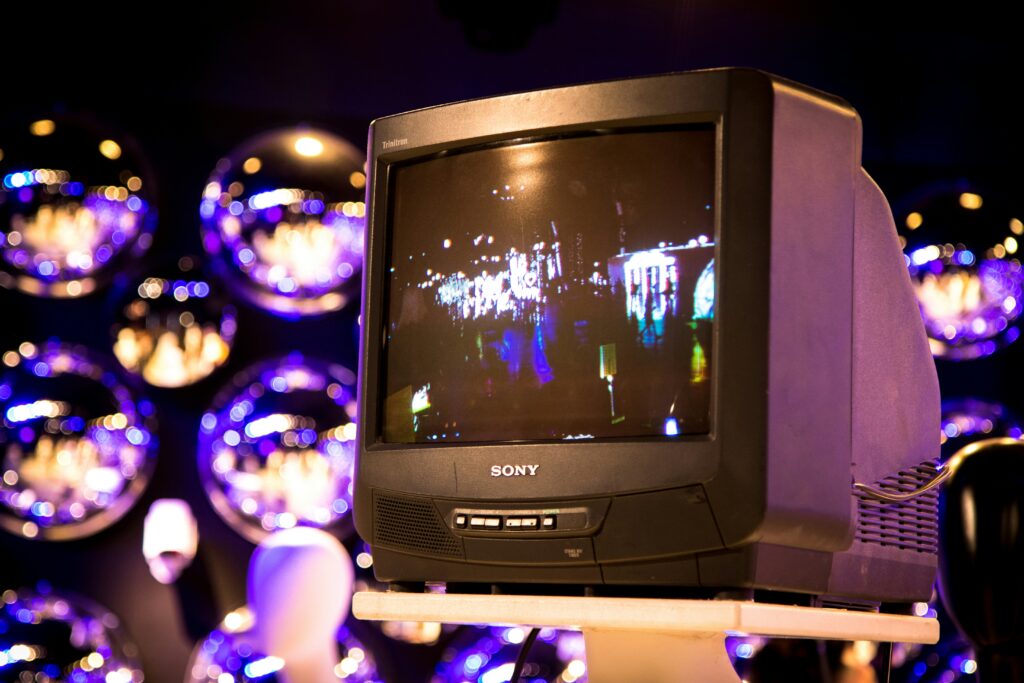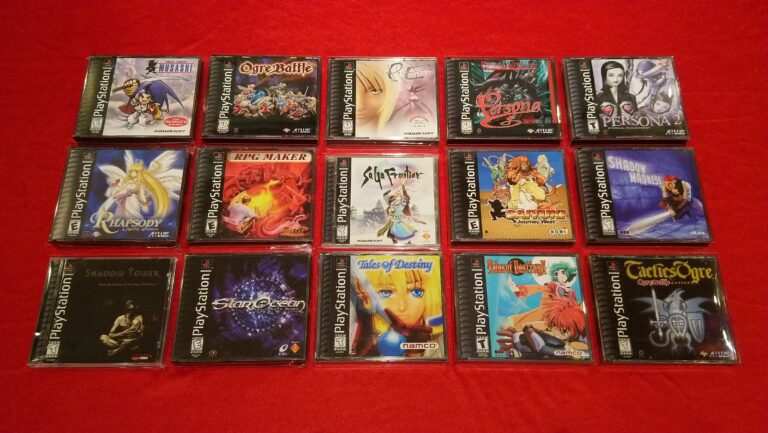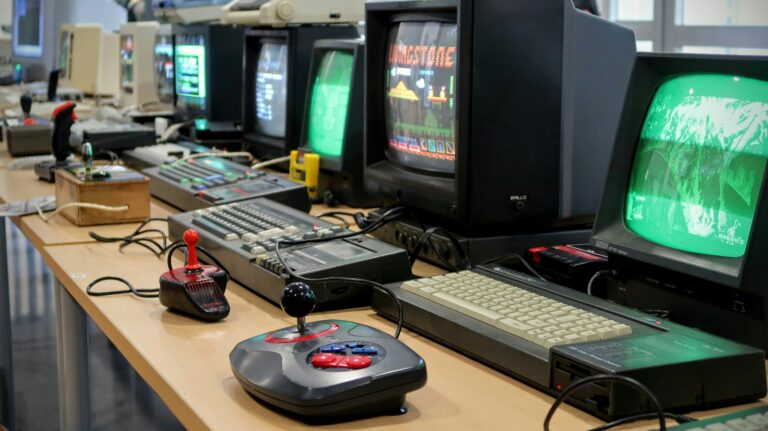As the digital world continuously evolves, pushing the boundaries of technology to new heights, there is a sect of enthusiasts who prefer to hark back to the origins, to the raw and arguably more tactile feel of the Cathode Ray Tube (CRT) televisions and monitors. In this detailed exploration, titled “Blast from the Past: Dive into Nostalgia with the Best CRT TVs and Monitors for Retro Consoles,” we will travel back in time to an era when television screens were deep, heavy, and radiated a warm glow that modern flat screens simply cannot replicate. Our journey will not merely be a trip down memory lane but a deep dive into the technical intricacies that made CRTs unique and still relevant in specific applications today.

Despite living in an age where 4K, OLED, and quantum dot technology reign supreme, there is a growing community of passionate retro gamers and vintage technology enthusiasts who swear by the aesthetic and feel of CRT TVs and monitors. But why is that? What makes these obsolete devices stand up against modern technology? To fully comprehend this, we must first understand the technology behind CRTs, their inherent advantages, and why they were the primary mode of display for the better part of the 20th century. By examining the science behind the CRT’s electron beam, phosphorescent glow, and screen refresh rates, we will unlock the secrets that make CRTs so special for retro gaming and professional applications.
Throughout this article, we will also explore some of the best CRT TVs and monitors that were ever produced, ideal for bringing out the authentic look and feel of retro consoles. From Sony’s legendary Trinitron series to the workhorse monitors of the IBM era, we’ll dissect what makes each one unique and sought after by CRT enthusiasts today. Whether you’re a dedicated retro gamer yearning for that perfect Super Nintendo display or a vintage tech lover hunting for a piece of technological history, this comprehensive guide will provide a wealth of information. So, buckle up as we delve into the world of CRTs, a world that despite being supplanted by flat screens and LEDs, continues to fascinate and attract those looking for an experience that modern technology often fails to deliver.
## CRT TVs and Monitors: A Quick Overview
CRT (Cathode Ray Tube) TVs and monitors, which were the mainstay of the video display world for several decades, are making a comeback in the world of retro gaming. Their unique visual aesthetic, combined with certain technical features that make them particularly well-suited to playing older video games, have led to a resurgence of interest in these seemingly antiquated devices.
Today, the market is flooded with different CRT options, each with its own set of benefits and drawbacks. Choosing the right one can be a daunting task, especially for those who are not well-versed in the technicalities of these devices. The following sections will provide an in-depth look at the best CRT TVs and monitors for retro consoles, diving into the specific features and factors to consider when making your selection.
Before moving on, here’s a brief introduction video on CRT TVs and Monitors by Retro Tech (“CRT Basics & Troubleshooting”) which can be found on YouTube. This will give you a basic understanding of how CRTs work.
## Best CRT TVs and Monitors for Retro Consoles: A Comparative Analysis
Now let’s explore the specific features of these models in detail.
## Sony KV-13FS100: Classic Trinitron Quality
Sony’s Trinitron line of CRT TVs is widely regarded as one of the best, and the KV-13FS100 is no exception. Featuring a 13″ screen and 480i resolution, this TV offers excellent picture quality with vibrant colors and sharp detail.
The KV-13FS100 also boasts auto-phosphor control, which automatically adjusts the phosphor response to deliver consistent brightness and color accuracy. Combined with the Trinitron tube’s superior convergence and focus, this results in a stunning image that’s perfect for retro gaming.
## Sharp 13VT-K100: A TV and VCR Combo
The Sharp 13VT-K100 offers a unique feature not found on many other CRT TVs: a built-in VCR. This allows you to watch your favorite VHS tapes without the need for a separate VCR unit, saving space and reducing clutter.
With a 13″ screen and 480i resolution, the 13VT-K100 provides a high-quality image for retro gaming. Its headphone jack is an added bonus, allowing you to enjoy your games without disturbing others.
## Samsung TX-P2036: Dynamic Focus for Sharp Images
Samsung’s TX-P2036 offers a larger screen size at 20″, making it a great option for gamers who prefer a bigger display. Its 480i resolution ensures a clear and sharp image, while the dynamic focus feature adjusts the electron beam’s focus during scanning, improving picture quality.
The TX-P2036 also features a 2 speaker system for enhanced audio, adding another dimension to your gaming experience.
## Panasonic CT-20SL14J: Convenience and Quality in One
Last but not least, the Panasonic CT-20SL14J combines quality and convenience in a single package. Like the Samsung TX-P2036, it features a 20″ screen and 480i resolution, providing a crisp and detailed image.
The CT-20SL14J also has an Invar shadow mask, which enhances color accuracy and reduces distortion. Its auto power on/off feature adds a level of convenience, automatically turning the TV on when it receives a signal and off when it doesn’t.
## A Few Final Words
While the world of CRT TVs and monitors can seem complex and overwhelming, it’s worth delving into if you’re a retro gaming enthusiast. The unique visual aesthetic and technical features of these devices make them the perfect platform for enjoying your favorite old-school games.
With careful consideration and a bit of research, you can find the perfect CRT TV or monitor for your retro gaming setup. Whether you prioritize screen size, picture quality, or unique features, there’s a CRT out there that’s perfect for you.
So why wait? Dive into the world of CRT TVs and monitors today and experience your favorite retro games like never before. Happy gaming!
Conclusion
To conclude, we have delved deeply into the multifaceted world of software engineering and its applications, demystifying complex concepts and demonstrating the value of technical understanding in today’s digital age. This article has provided a comprehensive guide to the intricate layers of software engineering, from its foundational theories to its modern applications and future developments. We have navigated through the importance of strong coding skills, the nuances of agile development methodologies, and the role of artificial intelligence in software engineering.
The beauty of software engineering lies in its ever-evolving nature, providing a constant stream of challenges and opportunities for those dedicated to this field. As we have seen, the fundamentals of software engineering are not simply about understanding how to code but involve a deep comprehension of problem-solving, logical thinking, and a desire for continuous learning.
We have highlighted how mastering these complex aspects opens up a world of possibilities in the technological realm, ranging from creating ground-breaking software solutions to transforming businesses through digital innovation. These possibilities do not only affect the professional world but have the potential to shape our society in ways we have yet to fully understand.
Undoubtedly, we have come a long way since the dawn of software engineering. But the journey is far from over. The emergence of technologies like machine learning, cloud computing, and data science is reshaping the software landscape, and it is up to the future generations of software engineers to steer this transformation in a direction that benefits all.
It is my hope that this article has not only enlightened you about the depths of software engineering but also inspired you to explore further, learn more, and perhaps even contribute to the field in your unique way. If there are aspects you would like to delve deeper into, I recommend resources like the Institute of Electrical and Electronics Engineers (IEEE) (https://www.ieee.org/) or the Association for Computing Machinery (ACM) (https://www.acm.org/), both of which provide a wealth of information on the latest developments in the software engineering world.
To quote Steve Jobs, “The people who are crazy enough to think they can change the world are the ones who do.” As we stand on the brink of a new era in software engineering, the power to change the world lies in our hands. So let us harness this power, armed with the knowledge we have gained, and make a difference in the world of technology.
Thank you for taking the time to read this article. If you found it valuable, please feel free to share it with others who might benefit from it. And if you have any thoughts or experiences you would like to share, please leave a comment. Your insights could be the spark that ignites a new perspective in someone else’s journey in the world of software engineering.



